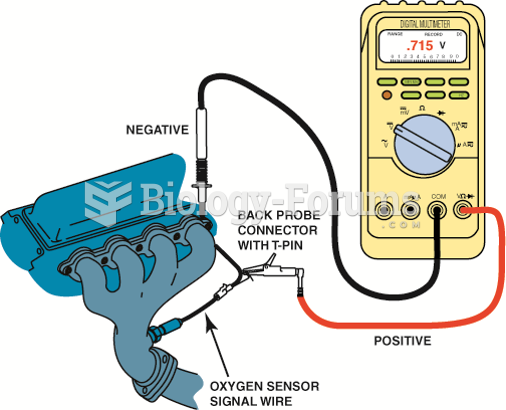|
|
|
Signs and symptoms that may signify an eye tumor include general blurred vision, bulging eye(s), double vision, a sensation of a foreign body in the eye(s), iris defects, limited ability to move the eyelid(s), limited ability to move the eye(s), pain or discomfort in or around the eyes or eyelids, red or pink eyes, white or cloud spots on the eye(s), colored spots on the eyelid(s), swelling around the eyes, swollen eyelid(s), and general vision loss.
About 600,000 particles of skin are shed every hour by each human. If you live to age 70 years, you have shed 105 pounds of dead skin.
Medication errors are three times higher among children and infants than with adults.
Aspirin is the most widely used drug in the world. It has even been recognized as such by the Guinness Book of World Records.
Nearly 31 million adults in America have a total cholesterol level that is more than 240 mg per dL.
 A typical calibration code sticker on the case of a controller. The information on the sticker is ...
A typical calibration code sticker on the case of a controller. The information on the sticker is ...
 The relationship between the crankshaft position (CKP) sensor and the camshaft position (CMP) sensor ...
The relationship between the crankshaft position (CKP) sensor and the camshaft position (CMP) sensor ...
 A PCV valve shown in a cutaway valve cover showing the baffles that prevent liquid oil from being ...
A PCV valve shown in a cutaway valve cover showing the baffles that prevent liquid oil from being ...




